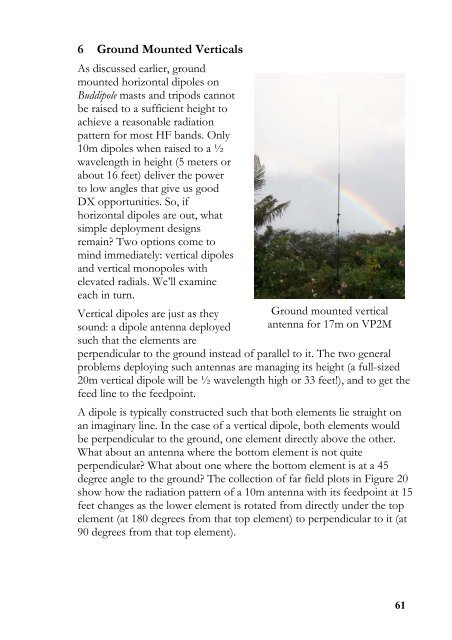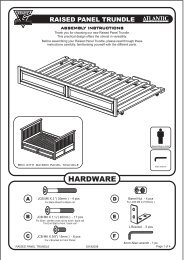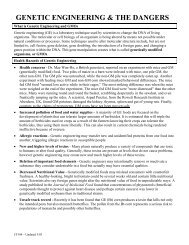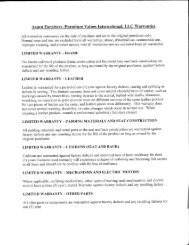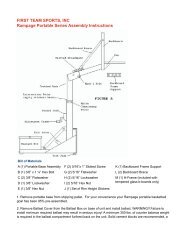BUDDIPOLE IN THE FIELD
BUDDIPOLE IN THE FIELD
BUDDIPOLE IN THE FIELD
You also want an ePaper? Increase the reach of your titles
YUMPU automatically turns print PDFs into web optimized ePapers that Google loves.
6 Ground Mounted Verticals<br />
As discussed earlier, ground<br />
mounted horizontal dipoles on<br />
Buddipole masts and tripods cannot<br />
be raised to a sufficient height to<br />
achieve a reasonable radiation<br />
pattern for most HF bands. Only<br />
10m dipoles when raised to a ½<br />
wavelength in height (5 meters or<br />
about 16 feet) deliver the power<br />
to low angles that give us good<br />
DX opportunities. So, if<br />
horizontal dipoles are out, what<br />
simple deployment designs<br />
remain? Two options come to<br />
mind immediately: vertical dipoles<br />
and vertical monopoles with<br />
elevated radials. We’ll examine<br />
each in turn.<br />
Vertical dipoles are just as they<br />
sound: a dipole antenna deployed<br />
such that the elements are<br />
Ground mounted vertical<br />
antenna for 17m on VP2M<br />
perpendicular to the ground instead of parallel to it. The two general<br />
problems deploying such antennas are managing its height (a full-sized<br />
20m vertical dipole will be ½ wavelength high or 33 feet!), and to get the<br />
feed line to the feedpoint.<br />
A dipole is typically constructed such that both elements lie straight on<br />
an imaginary line. In the case of a vertical dipole, both elements would<br />
be perpendicular to the ground, one element directly above the other.<br />
What about an antenna where the bottom element is not quite<br />
perpendicular? What about one where the bottom element is at a 45<br />
degree angle to the ground? The collection of far field plots in Figure 20<br />
show how the radiation pattern of a 10m antenna with its feedpoint at 15<br />
feet changes as the lower element is rotated from directly under the top<br />
element (at 180 degrees from that top element) to perpendicular to it (at<br />
90 degrees from that top element).<br />
61


